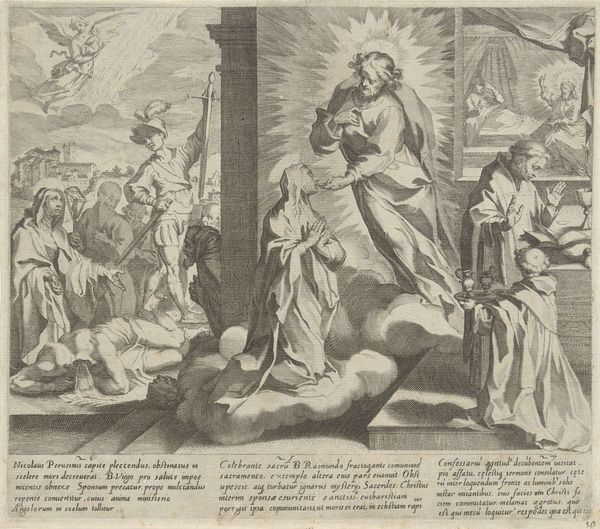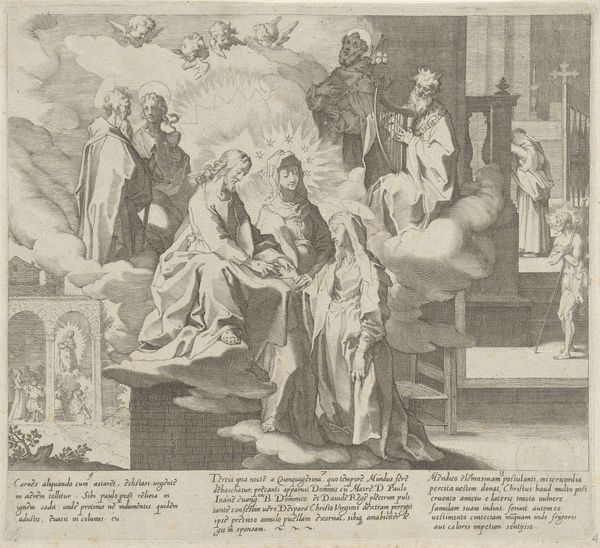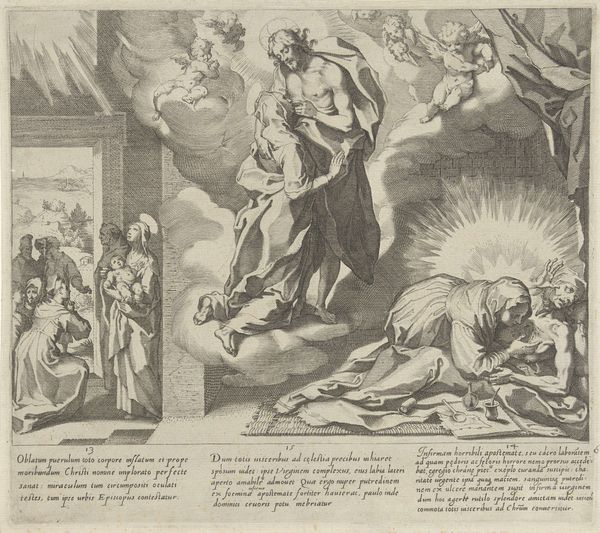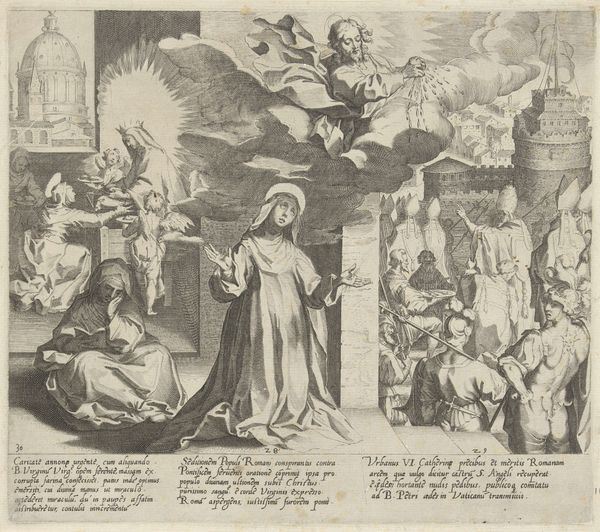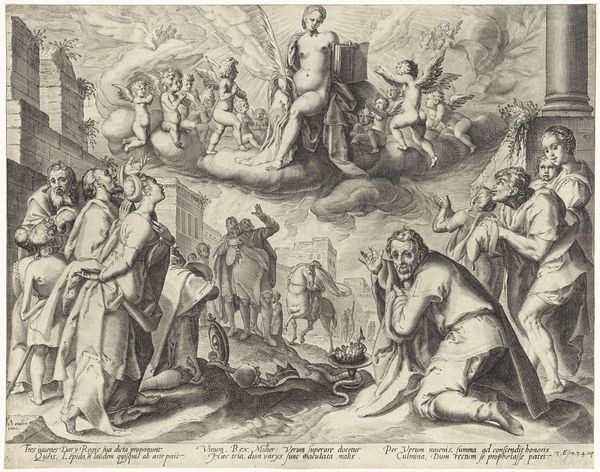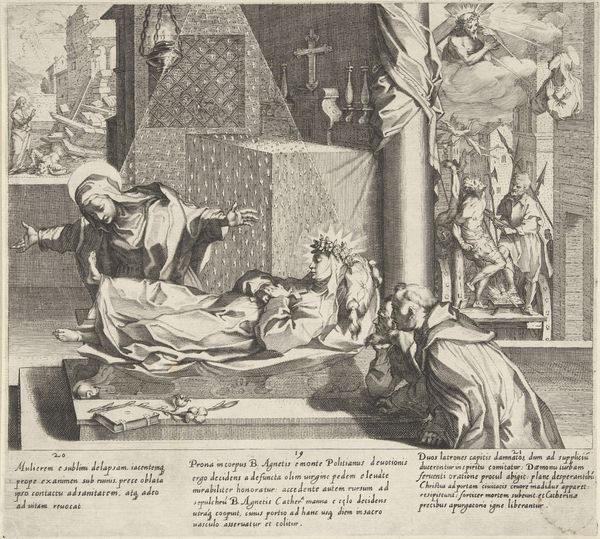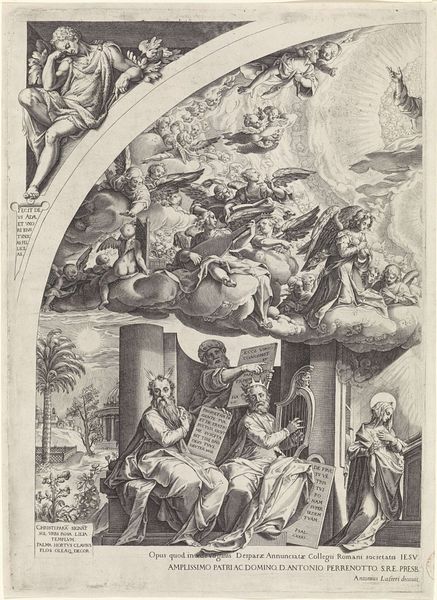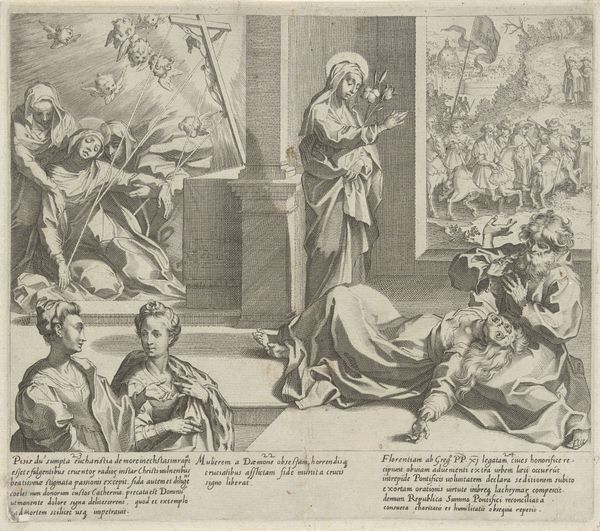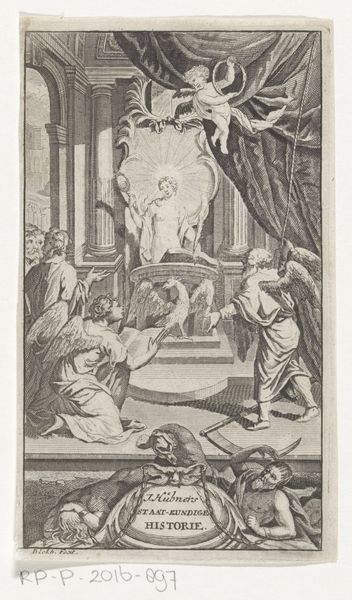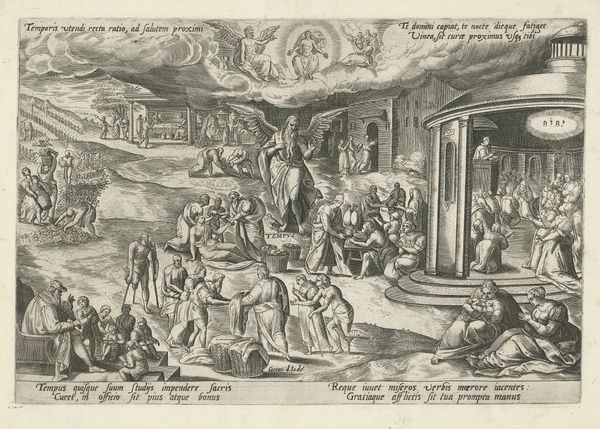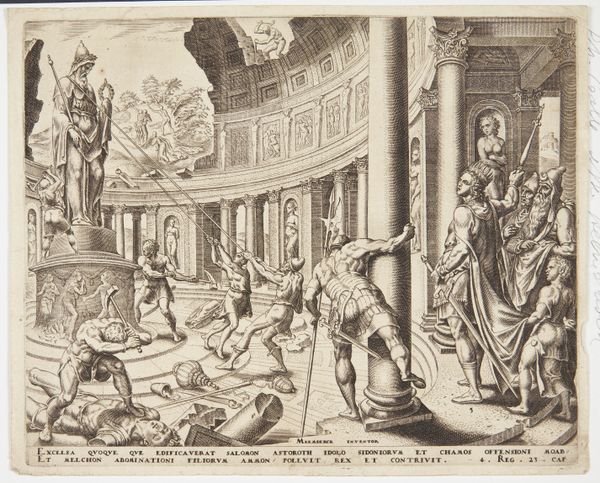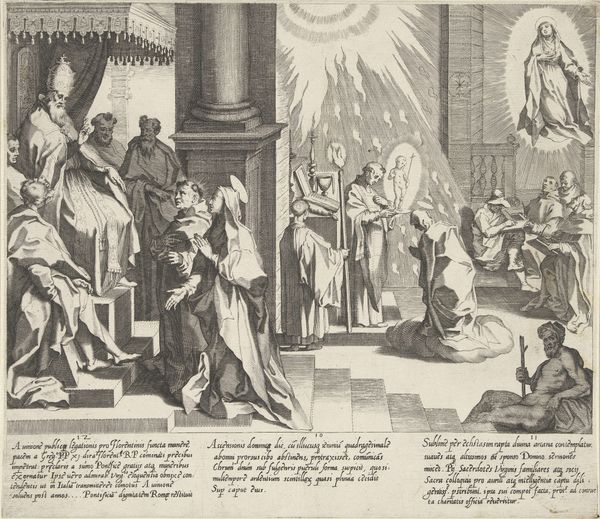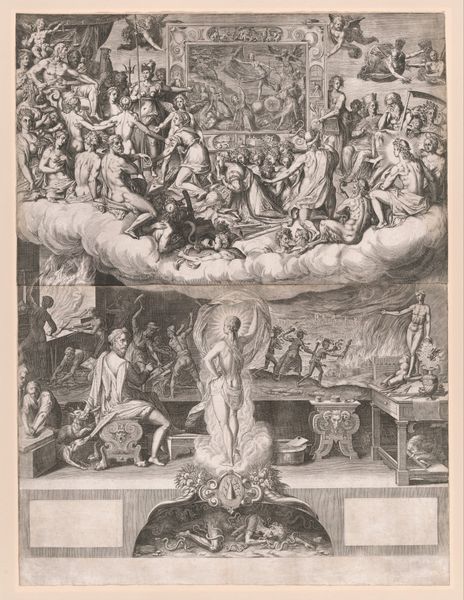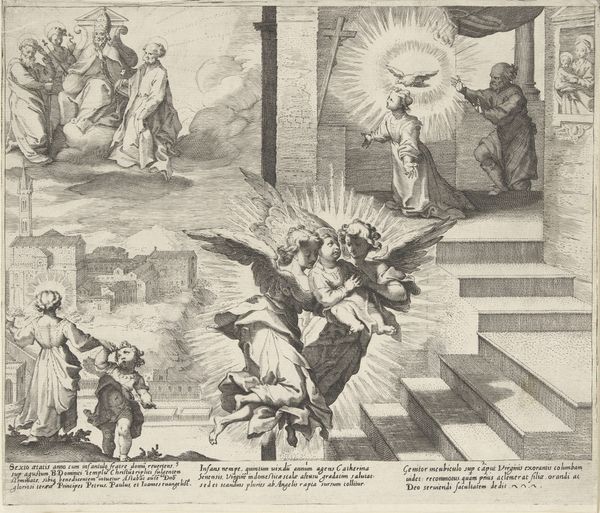
Catharina sterft op 33-jarige leeftijd / Catharina wordt in de hemel opgenomen 1597
0:00
0:00
pieterdejodei
Rijksmuseum
print, engraving
#
allegory
#
baroque
# print
#
figuration
#
history-painting
#
engraving
Dimensions: height 255 mm, width 286 mm
Copyright: Rijks Museum: Open Domain
Curator: So, this engraving by Pieter de Jode I, titled "Catharina Dies at the Age of 33 / Catharina Being Taken Up Into Heaven," was made in 1597. It depicts two scenes – Catharina's death and her ascension to heaven. What's your first impression of how those are presented in relation to each other, given the constraints of printmaking at the time? Editor: Well, it's certainly a contrast. The lower portion with Catherine's death feels earthbound and somber, full of mourning figures, while above, it's a swirling mass of celestial beings greeting her into heaven. What interests me is how an engraver in 1597 thought about creating those layers of visual density. How did they learn their trade, what kinds of materials did they work with? Curator: Exactly. Think about the artist's labor and skill involved in carving these intricate details into a metal plate. This wasn’t just about artistic vision; it was skilled labor. How would you see the material realities – the tools, the ink, the paper – shaping what could be expressed artistically? What limitations do you observe, but perhaps see translated as innovative choices to overcome that constraint? Editor: I guess the line work really emphasizes that materiality. It’s so precise and controlled, but you can also see where the engraver had to make choices about where to add shadow or detail because it's a limited medium. The stark contrasts also play into the religious aspects of this work, with light and dark taking on an otherworldly feel. So, would that attention to material indicate the print was intended for an elite audience who could appreciate the quality and care, as opposed to mass consumption? Curator: It very well could be! Printmaking was a complex and costly business. And a sophisticated patron would have recognized and appreciated the labour that was distilled into the engraving's lines and tones. It suggests an intended viewer very aware of their position relative to both the sacred and the profane… interesting! Editor: I never really thought about the connection between the making of art, like this print, and its social implications so directly. Thinking about labor and materials gives a completely different angle than just art history or iconographic analysis.
Comments
No comments
Be the first to comment and join the conversation on the ultimate creative platform.
